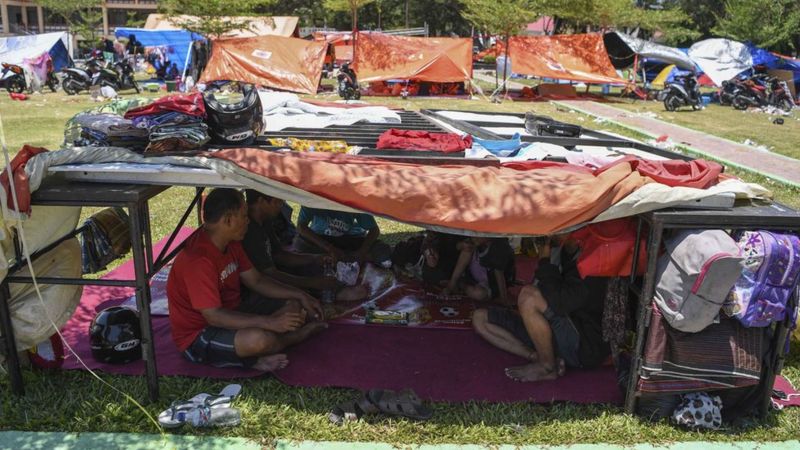Lombok Island in West Nusa Tenggara Province is one of the areas in Indonesia located in active tectonic zone and surrounded by various earthquake sources such as Back Arc Thrust Zone in the north, the megathrust in the south and the shear fault system in west and east (Pradono, 2018). Lombok Island has often experienced earthquake shocks ranging from a mild, moderate and robust scale.
In 2018, a series of moderate and robust earthquakes hit the cities and regencies on the island of Lombok. According to ASEAN Coordinating Center for Humanitarian Assistance on Disaster Management (AHA Center), the earthquake started with a magnitude of 6.4 which occurred on July 29, 2018 followed by M 7.0 on August 5 2018, M 6.2 on August 9 2018, and M 6.3 on August 19, 2018. The area worst affected by the earthquake at that time was North Lombok Regency. The earthquake caused landslides at several points, causing casualties and injuries. Losses due to earthquakes are affected almost all aspects of life, such as social, economic, political, and health. As of August 13 2018, National Disaster Management Agency (BNPB) verified 436 deaths, 1,353 people injured to various levels, and 352,793 people evacuated. The identified economic loss was around IDR 5.4 billion (+ USD 368 million).
The earthquake also caused damage to various public facilities. One of the available facilities that were severely damaged was the Gangga Community Health Center in Gangga District, North Lombok Regency. The health center building destroyed, and it could not be used in carrying out health service activities. The physical and psychological conditions of the health workers at Gangga Health Center who were victims of the earthquake also caused service activities not to run normally.
On the other hand, the threat of post-disaster diseases continues to lurk, such as infectious diseases that have the potential to become epidemic, mental health problems, and non-communicable diseases, either caused by trauma or poor environmental conditions in the evacuation. Therefore, monitoring efforts are needed to be aware of the possibility of various risks of the emergence of these diseases by carrying out post-disaster disease surveillance activities and providing prompt responses to these problems.
The limited number of health personnel after the earthquake caused the need for volunteer support. Universitas Airlangga is one of the institutions that contribute to fulfilling these things. Placement of students Field Epidemiology Training Program UNAIR(FETP)in disaster areas, helping health center surveillance officers to restart the surveillance system in their work areas which were disrupted and even stopped due to disasters.
Post-disaster surveillance activities on Lombok Island involve the Indonesian Ministry of Health Team, West Nusa Tenggara Provincial Health Office, North Lombok Health Service, Puskesmas officers in North Lombok, FETP students from various universities in Indonesia and other medical volunteers. The surveillance team appointed to work at the placement location for 14 days and will be replaced by another group (Almira, 2018).
This research aims to analyze the emergence of potential post-earthquake disease that occurred in Gangga District. The data were obtained from the results of the implementation of the post-disaster daily surveillance system at Gangga Health Center. Data were collected using WhatsApp and Epi Info software developed by Indonesian Ministry of Health in the period from 17 to August 31, 2018.
The results showed that 52% of the total patient visits at Gangga Puskesmas were women. The largest age group is 18-45 years. Most cases reported were infectious diseases with the potential for outbreaks, namely Acute Respiratory Infection (ARI) as much as 23% of the total cases and diarrhea in 15% of cases. There is one suspect for measles and four suspects with chickenpox. As of August 31 2018, the total deaths reported at Gangga Community Health Center were 89 cases.
Based on these results, there have been diseases that have the potential to become an epidemic, such as ARI, diarrhea, measles, and chickenpox. Therefore, prompt and adequate prevention and control, as well as appropriate case management and monitoring systems, are essential to minimize the burden of infectious diseases. Monitoring activities by public health center surveillance officers through daily data entry and analysis as an early warning for outbreaks, epidemiological investigations to determine the causes of disease and finding additional cases need to be optimized. Collaboration between the provincial government, district governments, health offices and other stakeholders is required in order to accelerate recovery.
Author: Almira F, Hidajah, AC
Link:





